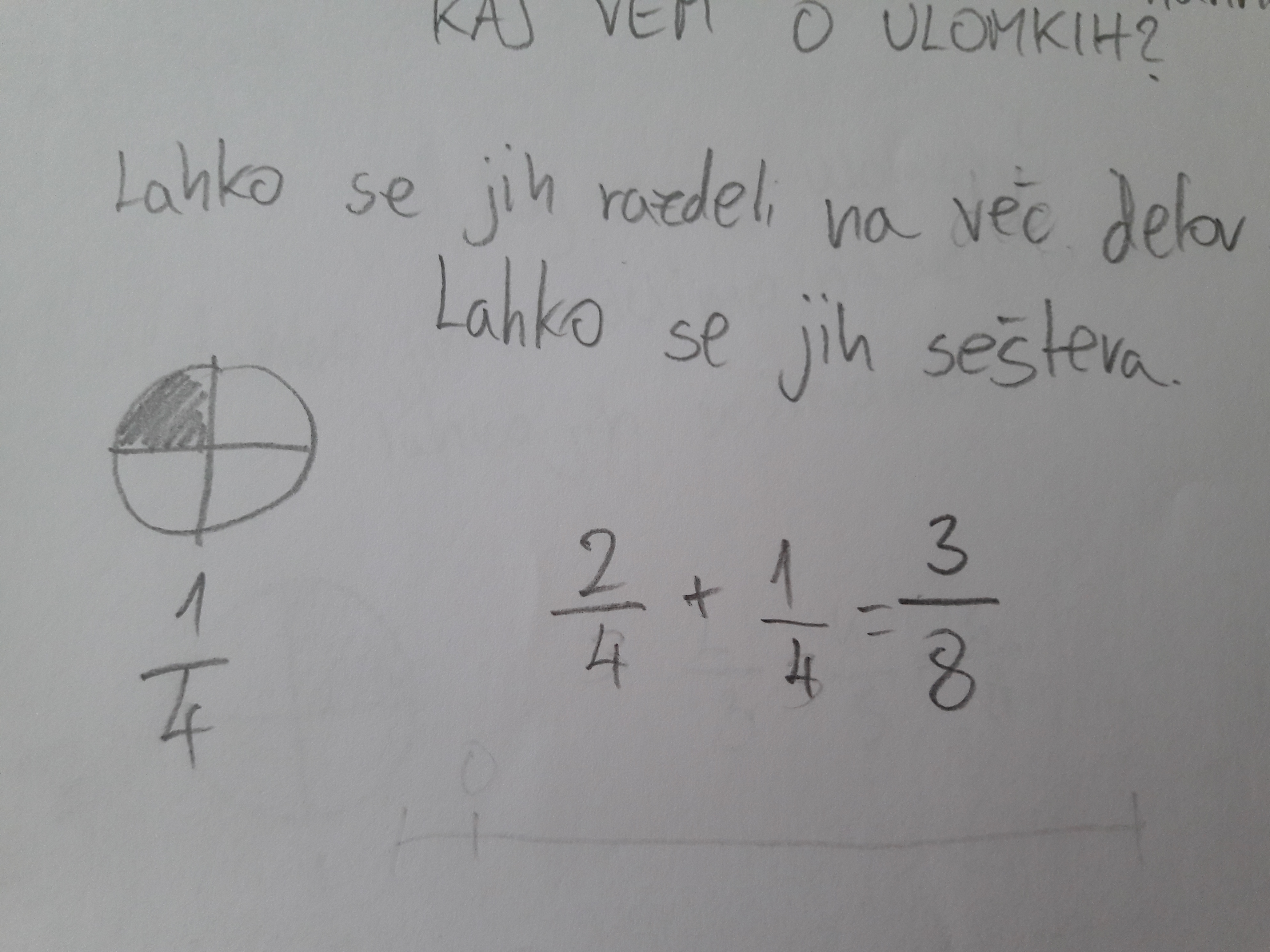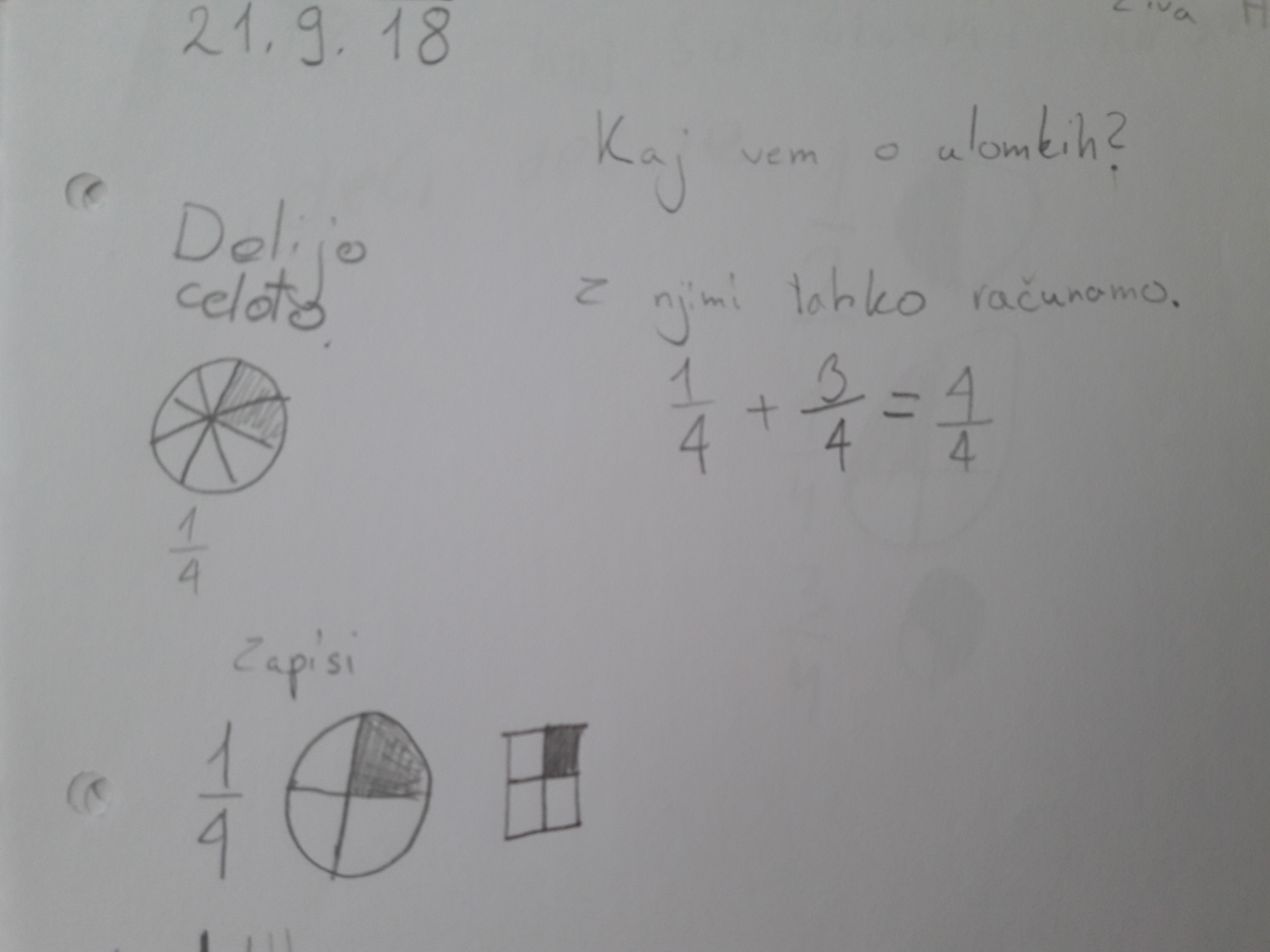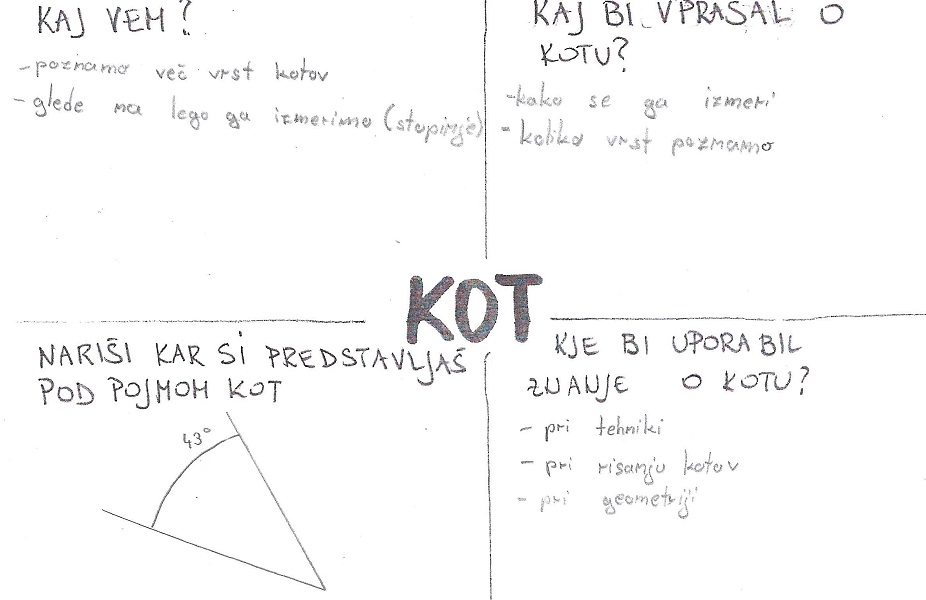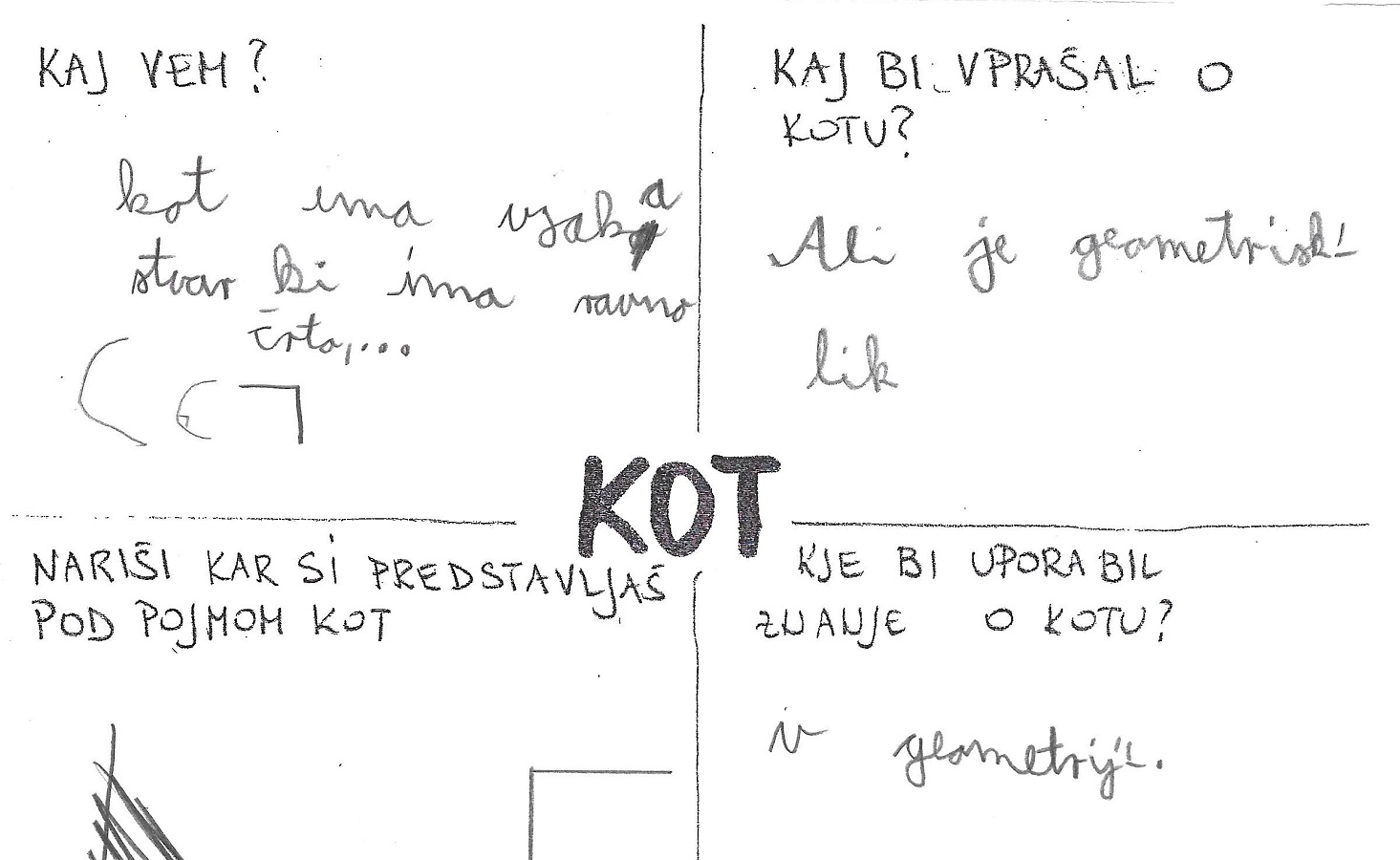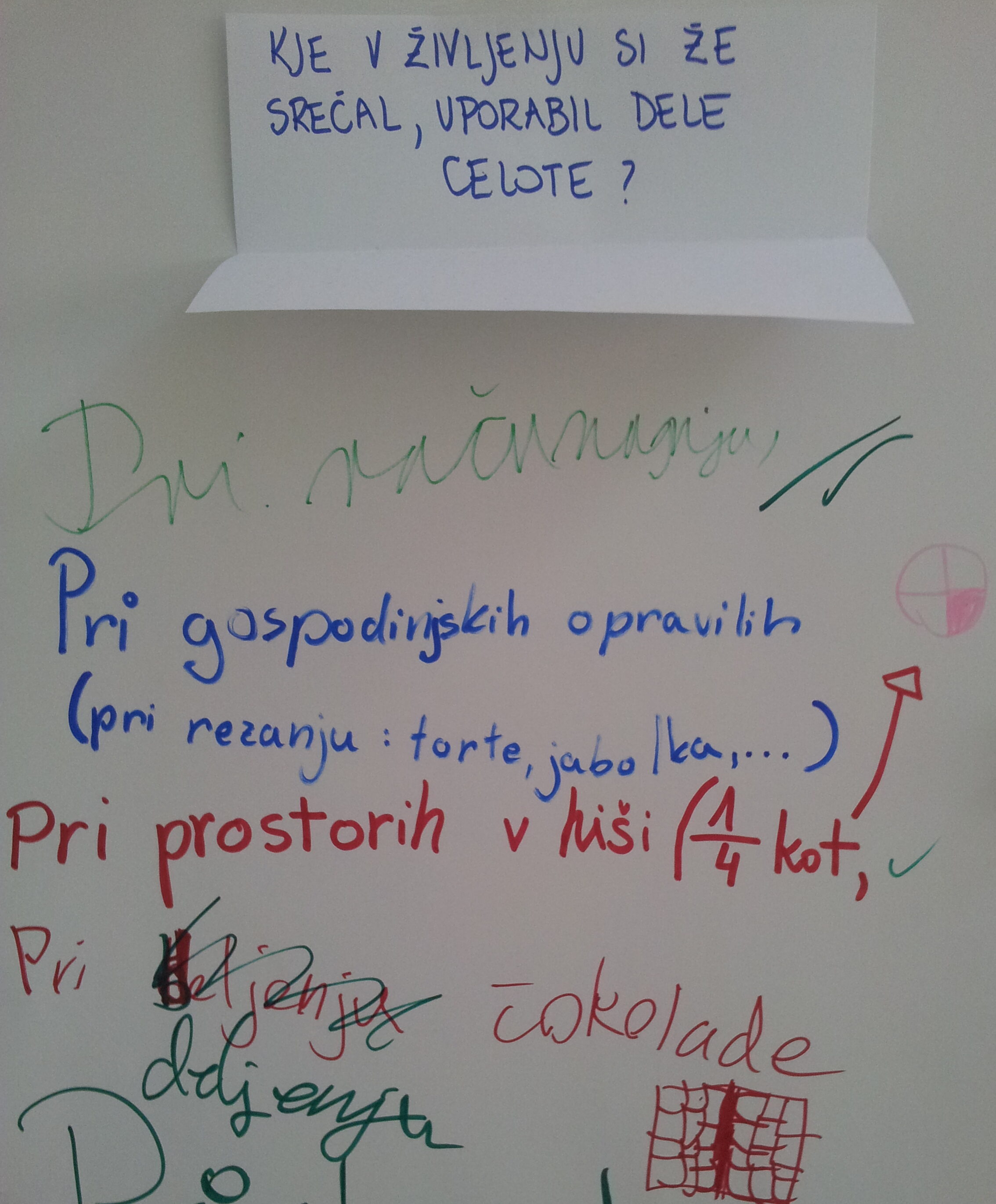ASSESSING PRIOR KNOWLEDGE Diagnostics
The purpose of knowledge diagnostics isn’t only assessing prior knowledge (via tests or quizzes) but also discovering subjects and skills that pupils excel in (and invest a lot of energy into), determining potential weaknesses (and ways of addressing and overcoming them), setting mutual goals (that give meaning to the learning process and focus on a pupil’s interests and needs), and making a plan on how to achieve them (by addressing learning strategies). Below are a few examples from the classroom.
HOW MY JOURNEY BEGAN
My pupils needed some time to get used to learning through active participation. Until they became comfortable with the concept of discovering the syllabus, they often answered my question of “How would you like to study?” by saying something along the lines of: “The teacher can explain the material in front of the class, we copy it from the board, we take turns solving exercises in front of the class, and we write everything down into our notebooks.” Their answers made me pause and think, because in my opinion such a teaching strategy didn’t really motivate pupils to learn Maths effectively or at the very least limited the pupils’ potential for greater progress. My pupils’ answers showed me what I needed to address to improve the learning process.
HOW I’VE ADAPTED
At the start of a new school year I now set up new material, assess any problems that might come up, and tackle knowledge acquisition. I do so by first assessing the pupils’ prior knowledge and then forming a plan on how to improve with their help. Together we make a plan that will enable us to achieve our goals. Later we transition from focusing on the group to each individual pupil. This step is especially important during the learning process and when pupils are ready to demonstrate their knowledge.
EXAMPLES FROM THE CLASSROOM Example 1
“What do I already know?”
“What would I still like to learn?”
I assign pupils into heterogeneous groups and ask them to talk about the topic we are covering and take notes. I usually ask them to write down what they already know and what they would still like to learn.
- What do I already know? Where have I heard this term before? Where do I already use this knowledge and where will it come in handy? Draw something that you associate with this topic.
- What interests you most about this topic? What more would you like to find out about this topic? “What would I still like to learn?”
EXAMPLES FROM THE CLASSROOM Example 2
When planning the syllabus in the 6th grade of primary school I asked my pupils the following questions: What is the easiest way of achieving this goal? What is your favourite way to learn? How can you get the most out of this lesson? Their most common answers were that they love working in groups, solving exercises, working together, and helping one another. They wished for the teacher to be there for them and assist them. They wanted to learn at their own pace, keep track of their progress, and assess their knowledge (without using grades).
We had some problems with setting goals (because it was our first time doing it with this class) and forming a plan for language acquisition. When asked how and what they would like to learn, the pupils wrote down the following answers:
- We will learn everything we have to learn,
- We will learn everything the teacher tells us is important.
- We will learn everything that we need to know.
- How are we supposed to know what we need to learn?
- I’ll learn by doing homework.
- I’ll try to be as hard-working as possible and do everything the teacher tells me.
- I’ll do my homework regularly, I won’t talk in class, and I’ll study hard.
These answers made mapping out my next steps more challenging. I decided to use D. William’s technique of using behavioural testing methods for formative assessment purposes and chose one of my tests for the pupils to analyse. I asked each group of pupils to review the test and selected the exercises they would know how to solve then rank the exercises from easiest to hardest. When they finished their assessment, we discussed their answers and determined the pupils’ strengths and weaknesses. These were later set as our learning goals and addressed in upcoming lessons.
We organised our lessons according to the pupils’ wishes. We worked primarily in groups, the pupils could help and support one another during class, we spent a few hours playing didactic games in the classroom and in the computer room, and we evaluated what the pupils had learned and which goals they’d achieved (through quality feedback and advice, without counting points or assigning grades).
EXAMPLES FROM THE CLASSROOM Example 3
I hand out work sheets with questions that encourage pupils to talk about a certain topic and write down something they already know about it and/or something they still wish to learn.
- What do I already know? Where have I heard this term before? Where do I already use this knowledge and where will it come in handy? Draw something that you associate with this topic.
- What interests you the most about this topic? What more would you like to learn? What would I still like to learn?
Mutual goal setting and syllabus planning can continue in groups or together as a class. To help guide the pupils through this process, use questions such as:
- How do we reach the goal(s) we’ve set (see the Planning and Diagnostics section)?
- What are the fastest, best, and easiest ways to learn?
- What kind of space do we need to learn?
- How can we make a personal plan for school work and learning?



